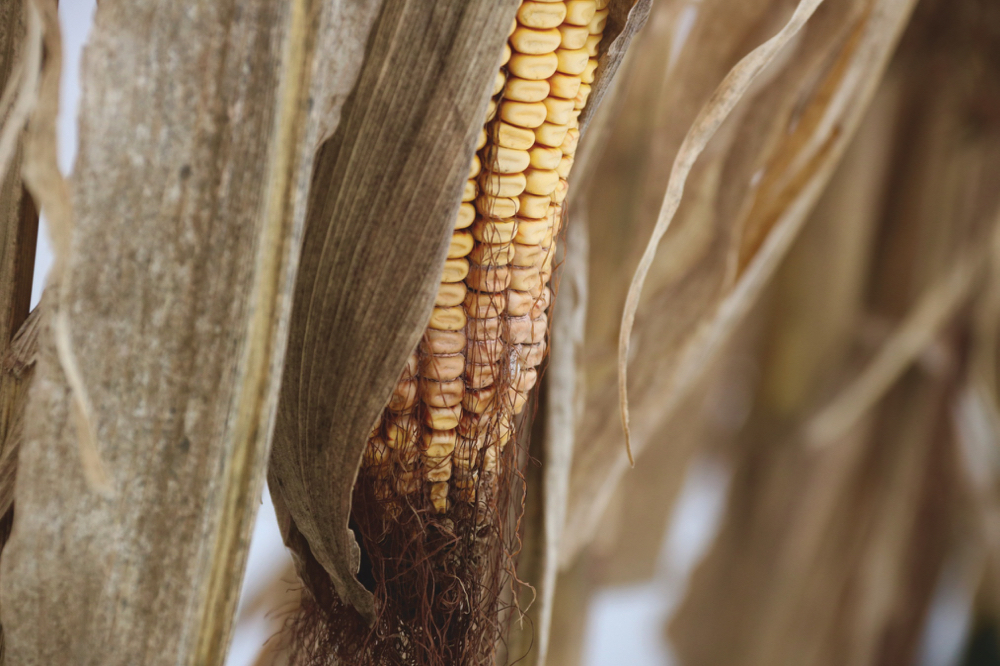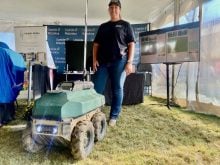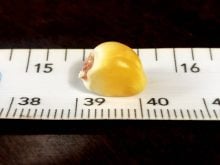Farmers continue to search for better ways to manage risk of an outbreak of deoxynivalenol (DON) in future corn crops.
One of the areas of most interest is figuring out which corn hybrids are most susceptible to infection. There is currently no screening program for vomitoxin in corn hybrids in Ontario.
Why it matters: Finding ways of reducing risk of a repeat of the 2018 DON corn infection can help farmers make better business decisions.
The vomitoxin in the 2018 corn crop, caused by the presence of several corn cob infections, especially Gibberella, resulted the worst toxin issues in memory. Not only was the amount of infected corn an issue, but the levels of corn at extremely high levels of infection. The amount of highly infected corn — any over five parts per million — was also exceptionally large, making for unprecedented issues with marketing.
Read Also

Packer buys Green Giant, Le Sieur veg brands from U.S. owner
A Quebec-based processor’s deal to buy the Green Giant and Le Sieur packaged and frozen vegetable brands in Canada from a U.S. owner clarifies the status of two popular retail brands grown by Canadian farmers.
“The first thing we can pin the problem on is the weather, but we can’t do much about that,” said Art Schaafsma, a professor in Plant Agriculture at the University of Guelph’s Ridgetown College. “The second thing that always comes to the top, is that a few hybrids are highly susceptible. If we can keep highly susceptible hybrids out of the marketplace it will go a ways to solve the problem.”
Developing resistant hybrids will take a lot longer than screening out hybrids that are highly susceptible, he said. One of the challenges is that some of the most-susceptible hybrids also produce high yield, said Schaafsma.
The Ontario Corn Committee (OCC), the group that operates the annual independent corn hybrid trials has recorded no long-term data on infection by Gibberella and the resulting DON infection. However, it has formed a working group of growers, plant breeders, seed companies, seed pathologists and extension people who will recommend research that can be undertaken in 2019 to help reduce the risk of a similar outbreak.
Samples were collected from each of the plots that go into the OCC indices. They will be reviewed to see what information can be gleaned about factors associated with DON production, the range of tolerance among hybrids to mycotoxin accumulation and the consistency of tolerance across different environments.
The Ontario Corn Committee is the place for the development of a screening system, says Crosby Devitt, vice-president of strategic development for Grain Farmers of Ontario (GFO). The farmer organization has heard for several years through grower resolutions that a screening system for DON is needed in the province.
There’s also a role for seed companies, he said. Some already have ratings and some do not.
Testing needs a champion
DON infection, while an issue in Michigan and some other American growing areas, is especially an Ontario problem, says Schaafsma. That means that it needs an Ontario solution. He said that there are vomitoxin problem spots somewhere in Ontario most years. The Great Lakes which provide moderate winters and plenty of moisture for growing crops in Ontario, also help create an environment conducive to the growing of mold.
Growers or those affected by the problem will need to fund the independent screening of hybrids for susceptibility.
The process involves inoculating the hybrids, then misting them to grow the infection to test which hybrids are susceptible. The plots have to be hand evaluated and kernels ground to evaluate the true level of infection. It’s a costly process. Schaafsma estimates it could cost $200 per year per hybrid, which would be significant, but compared to the cost of the infection this year “in the grand scheme of things is peanuts.”
“We need to buckle down and come to grips with what we need to do to deal with it,” says Schaafsma. That requires growers, through their organization Grain Farmers of Ontario, end users, like ethanol plants and hog farmers, to be involved and invest in solutions, he says.
“The GFO goal is to have good ratings one way or another,” said Devitt. “There’s a big investment in corn seed in this province. We’ve got to be able to find money in the system to do what we need to do.”















